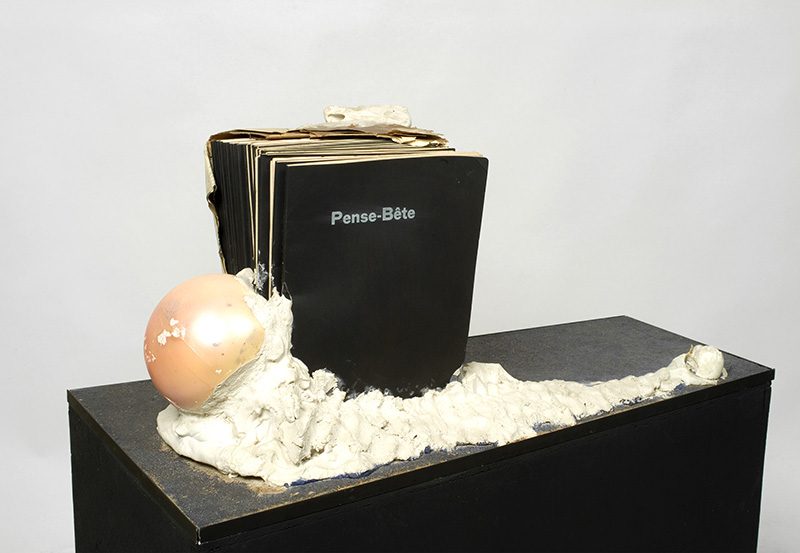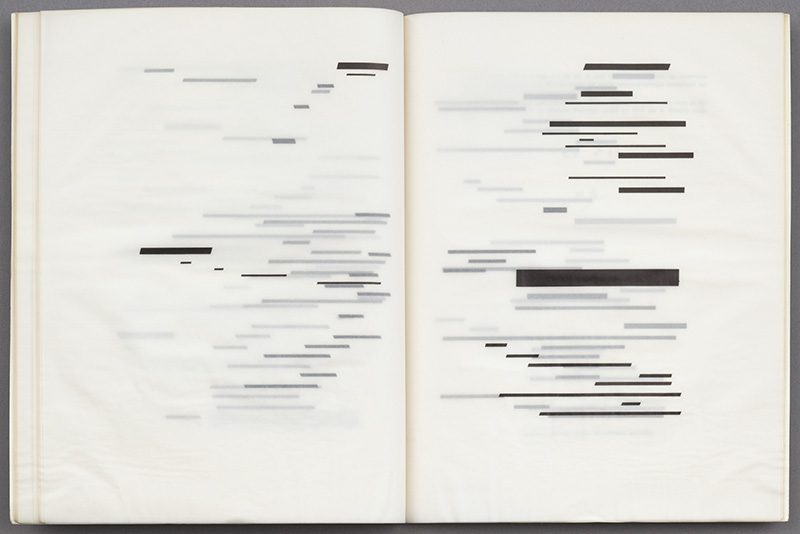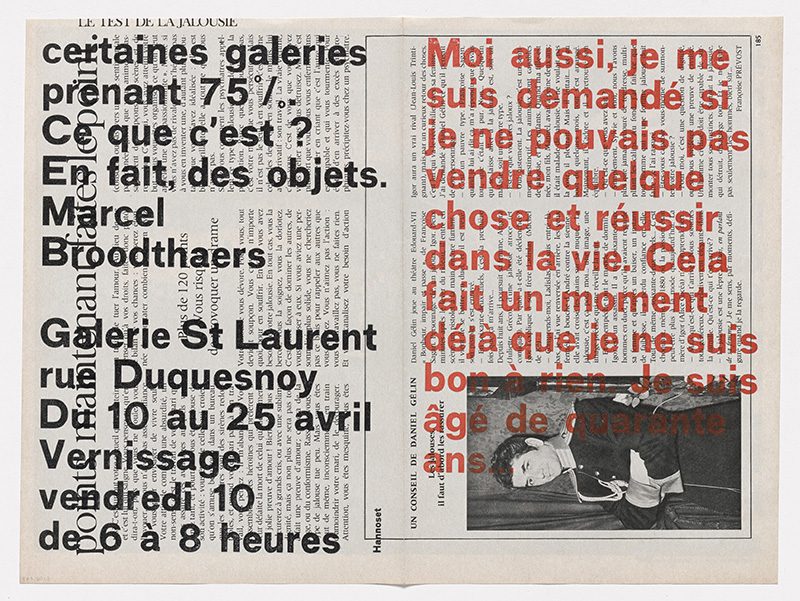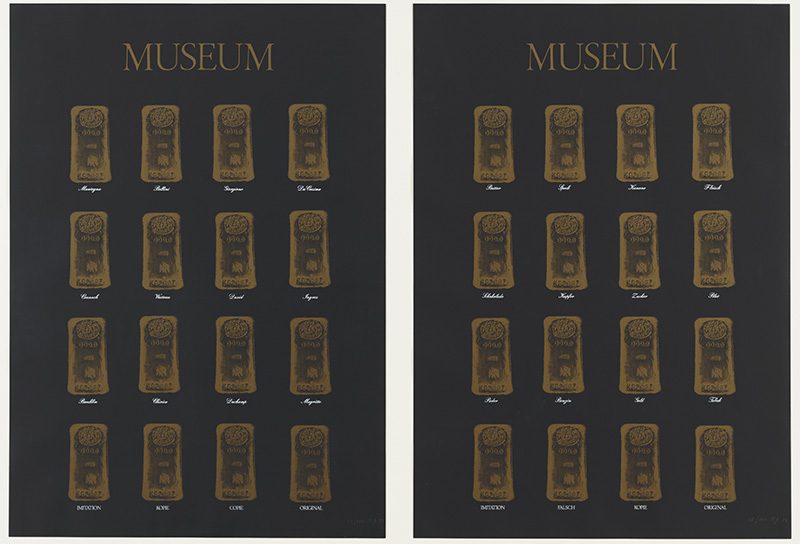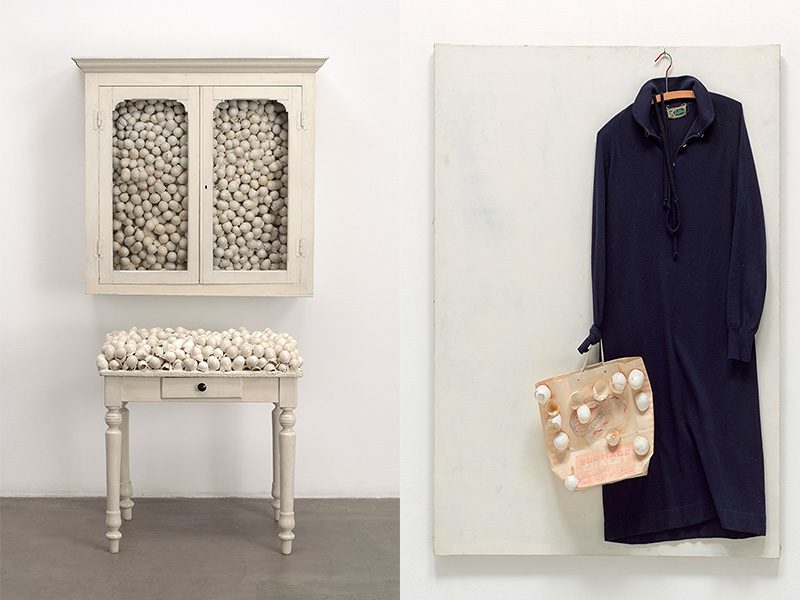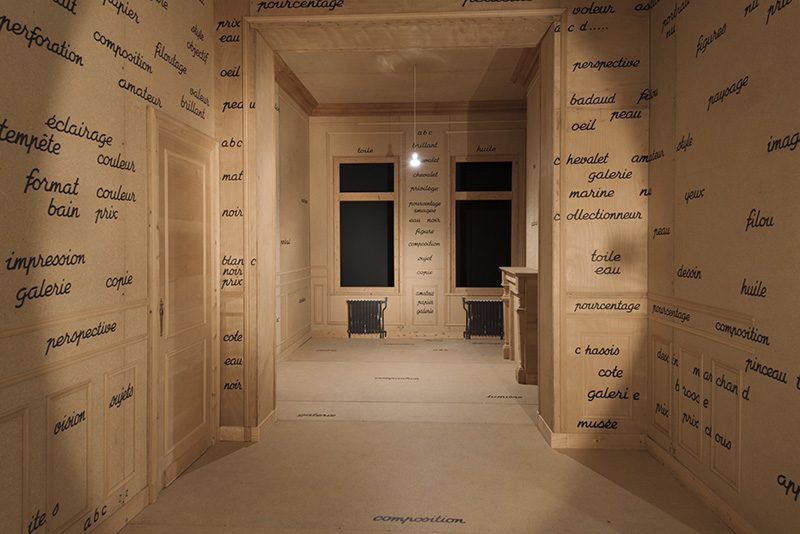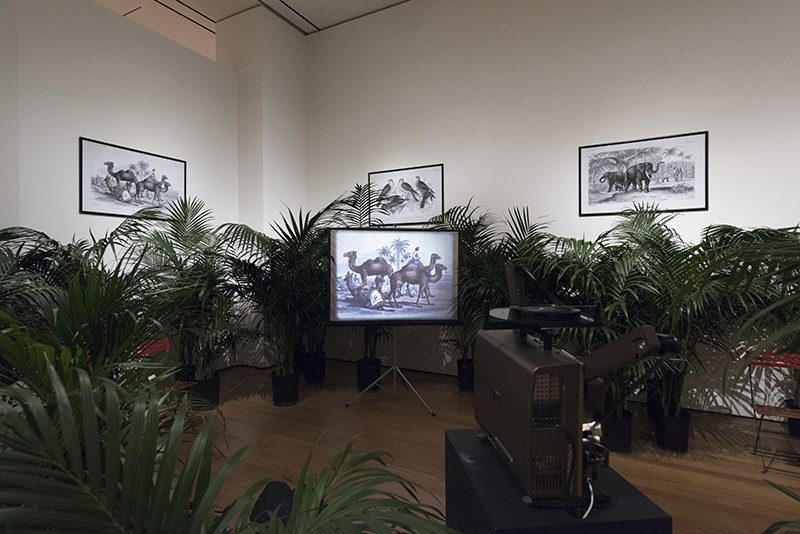ART-TRIBUTE:Marcel Broodthaers-A Retrospective
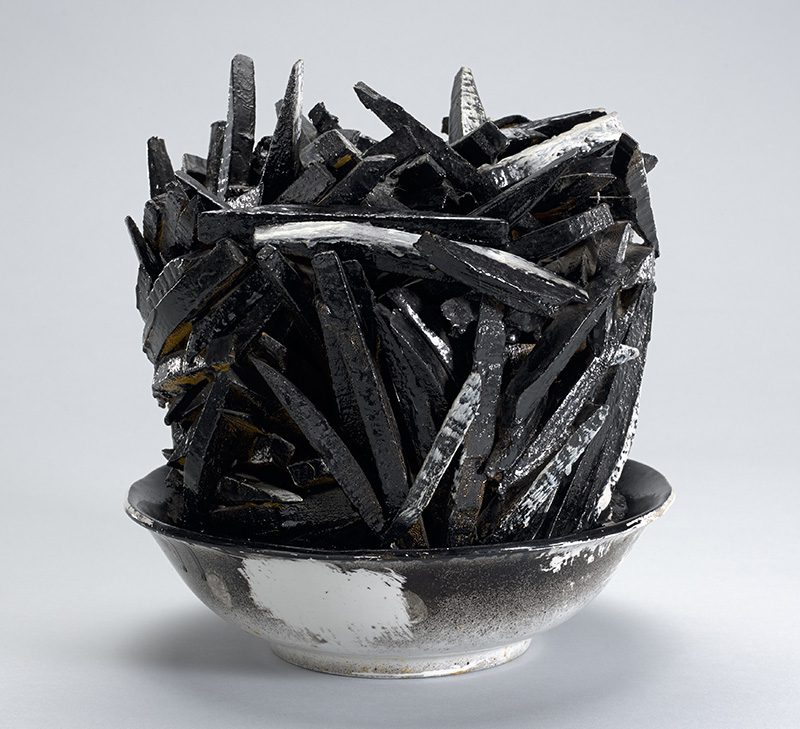 The exhibition “Marcel Broodthaers: A Retrospective” at The Museum of Modern Art brings together 200 works of the artist. The exhibition explores the critical if under-recognized place of Marcel Broodthaers in the history of 20th Century art, and his extraordinary output across mediums that placed him at the center of international activity during the transformative decades of the ‘60s and ‘70s.
The exhibition “Marcel Broodthaers: A Retrospective” at The Museum of Modern Art brings together 200 works of the artist. The exhibition explores the critical if under-recognized place of Marcel Broodthaers in the history of 20th Century art, and his extraordinary output across mediums that placed him at the center of international activity during the transformative decades of the ‘60s and ‘70s.
By Efi Michalarou
Photo: The Museum of Modern Art Archive
Throughout his career, from his early objects variously made of books of his own poetry, mussel shells and eggshells to his most ambitious project, the Musée d’Art Moderne, Département des Aigles and his distinctive “Décors” that set a precedent for what we call Installation Art today, the work of Broodthaers has had a profound influence on a broad range of contemporary artists, and he remains vitally relevant to cultural discourse at large. The exhibition begins in the 6th floor atrium with “L’Entrée de l’exposition” (1974), a work composed of prints, photographs, and a painting displayed among leafy palm trees and continues in The Joan and Preston Robert Tisch Exhibition Gallery in 4 sections. The first gallery is dedicated to Broodthaers’s poetry, written from the late ‘40s to the early ‘60s, displayed alongside his earliest experiments in photography and film. In 1956, Broodthaers shot his first film, “La Clef de l’horloge, Poème cinématographique en l’honneur de Kurt Schwitters” in an exhibition of work by Schwitters. In 1964, Broodthaers announced his entry into the visual arts by transforming the unsold copies of his last book of poetry, “Pense-Bête”, into a sculpture. Building on motifs that he had first used in poetic verse, Broodthaers’s earliest artworks did not represent his turn away from poetry but rather his effort to extend its reach. His irreverent sense of humor and love of wordplay are visible in his use of mussel shells and eggshells, which he obtained from a local restaurant and which became his signature materials. Ever skeptical of authority, Broodthaers made work that reflected his political concerns, and he harnessed Belgian associations with mussel shells, coal, and fries in order to confront his national identity. In 1968, Broodthaers announced that he was no longer an artist and appointed himself director of his own museum, which he called the Musée d’Art Moderne, Département des Aigles. Instead of being dedicated to the display of art objects, it often focused on a museum’s supporting activities which Broodthaers represented through announcements, publications, films, slide projections, and objects. Conceived in the aftermath of the 1968 student protests against the war in Vietnam and inequality worldwide, Broodthaers’s project provided a richly layered commentary on the role of art and the function of the museum in society. Over the course of four years Broodthaers rolled out 12 temporary presentations of the Musée d’Art Moderne, which he called “sections”, in seven European cities. In 1972, Broodthaers concluded his tenure as the self-appointed director of his Museum and declared that he was becoming an artist again. He signaled his return to art making by developing a new form of painting. To create his “Peintures littéraires”, Broodthaers printed words onto canvas, and in La Salle blanche of his museum, he hired a sign painter to inscribe a number of words, on the walls and ceiling. From 1974 until his death in 1976, Broodthaers organized immersive large-scale displays in which examples of his past work were shown with new works and borrowed objects. He called these exhibitions “Décors”. By doing so, and by employing outdated installation tropes like: palm trees, carpets and 19th Century display cases, Broodthaers evoked ideas of decoration, ornamentation, and theater.
Info: Curators: Christophe Cherix & Francesca Wilmott, The Museum of Modern Art, 11 West 53 Street, New York, duration: 14/2-15/5/16, Days & Hours: Sat-Thu 10:30-17:30, Fri 10:30-20:00, www.moma.org
